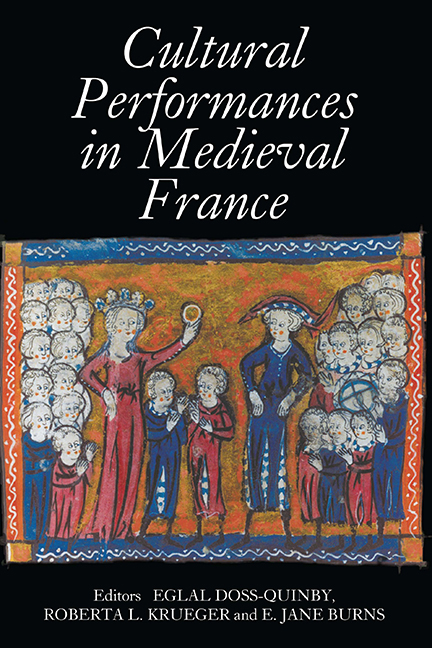35 results
Characteristics Associated with First Aid and Cardiopulmonary Resuscitation Training and Use in Queensland, Australia
-
- Journal:
- Prehospital and Disaster Medicine / Volume 34 / Issue 2 / April 2019
- Published online by Cambridge University Press:
- 10 April 2019, pp. 155-160
- Print publication:
- April 2019
-
- Article
- Export citation
The Taipan Galaxy Survey: Scientific Goals and Observing Strategy
-
- Journal:
- Publications of the Astronomical Society of Australia / Volume 34 / 2017
- Published online by Cambridge University Press:
- 24 October 2017, e047
-
- Article
-
- You have access
- HTML
- Export citation
Developing a Canadian emergency medical services research agenda: a baseline study of stakeholder opinions
-
- Journal:
- Canadian Journal of Emergency Medicine / Volume 15 / Issue 2 / March 2012
- Published online by Cambridge University Press:
- 04 March 2015, pp. 83-89
- Print publication:
- March 2012
-
- Article
-
- You have access
- Export citation
The Canadian National EMS Research Agenda: a mixed methods consensus study
-
- Journal:
- Canadian Journal of Emergency Medicine / Volume 15 / Issue 2 / March 2012
- Published online by Cambridge University Press:
- 04 March 2015, pp. 73-82
- Print publication:
- March 2012
-
- Article
-
- You have access
- Export citation
Rate of Prescription of Antidepressant and Anxiolytic Drugs after Cyclone Yasi in North Queensland
-
- Journal:
- Prehospital and Disaster Medicine / Volume 27 / Issue 6 / December 2012
- Published online by Cambridge University Press:
- 25 September 2012, pp. 519-523
- Print publication:
- December 2012
-
- Article
- Export citation
Evolution of the Literature Identifying Physicians' Roles in Leadership, Clinical Development, and Practice of the Subspecialty of Emergency Medical Services
-
- Journal:
- Prehospital and Disaster Medicine / Volume 26 / Issue 1 / February 2011
- Published online by Cambridge University Press:
- 25 March 2011, pp. 49-64
- Print publication:
- February 2011
-
- Article
- Export citation
Contributors
-
-
- Book:
- The Cambridge Dictionary of Christianity
- Published online:
- 05 August 2012
- Print publication:
- 20 September 2010, pp xi-xliv
-
- Chapter
- Export citation
Frontmatter
-
- Book:
- Cultural Performances in Medieval France
- Published by:
- Boydell & Brewer
- Published online:
- 24 October 2017
- Print publication:
- 15 March 2007, pp i-vi
-
- Chapter
- Export citation
Contributors
-
- Book:
- Cultural Performances in Medieval France
- Published by:
- Boydell & Brewer
- Published online:
- 24 October 2017
- Print publication:
- 15 March 2007, pp xiii-xiv
-
- Chapter
- Export citation
PART I - POETIC AND MUSICAL PERFORMANCES
-
- Book:
- Cultural Performances in Medieval France
- Published by:
- Boydell & Brewer
- Published online:
- 24 October 2017
- Print publication:
- 15 March 2007, pp 1-2
-
- Chapter
- Export citation
PART V - RE–ENACTMENTS AND LEGACIES
-
- Book:
- Cultural Performances in Medieval France
- Published by:
- Boydell & Brewer
- Published online:
- 24 October 2017
- Print publication:
- 15 March 2007, pp 233-234
-
- Chapter
- Export citation
PART IV - PERSUASIVE PERFORMANCES
-
- Book:
- Cultural Performances in Medieval France
- Published by:
- Boydell & Brewer
- Published online:
- 24 October 2017
- Print publication:
- 15 March 2007, pp 179-180
-
- Chapter
- Export citation

Cultural Performances in Medieval France
- Essays in Honor of Nancy Freeman Regalado
-
- Published by:
- Boydell & Brewer
- Published online:
- 24 October 2017
- Print publication:
- 15 March 2007
Contents
-
- Book:
- Cultural Performances in Medieval France
- Published by:
- Boydell & Brewer
- Published online:
- 24 October 2017
- Print publication:
- 15 March 2007, pp vii-x
-
- Chapter
- Export citation
PART II - PERFORMING SEXUAL AND SOCIAL IDENTITIES
-
- Book:
- Cultural Performances in Medieval France
- Published by:
- Boydell & Brewer
- Published online:
- 24 October 2017
- Print publication:
- 15 March 2007, pp 55-56
-
- Chapter
- Export citation
List of Illustrations
-
- Book:
- Cultural Performances in Medieval France
- Published by:
- Boydell & Brewer
- Published online:
- 24 October 2017
- Print publication:
- 15 March 2007, pp xi-xii
-
- Chapter
- Export citation
Tabula Gratulatoria
-
- Book:
- Cultural Performances in Medieval France
- Published by:
- Boydell & Brewer
- Published online:
- 24 October 2017
- Print publication:
- 15 March 2007, pp 301-302
-
- Chapter
- Export citation
Nancy Freeman Regalado, Curriculum Vitae
-
- Book:
- Cultural Performances in Medieval France
- Published by:
- Boydell & Brewer
- Published online:
- 24 October 2017
- Print publication:
- 15 March 2007, pp xxiii-xxxvi
-
- Chapter
- Export citation
PART III - DEVOTIONAL PRACTICE AND TEXTUAL PERFORMANCE
-
- Book:
- Cultural Performances in Medieval France
- Published by:
- Boydell & Brewer
- Published online:
- 24 October 2017
- Print publication:
- 15 March 2007, pp 121-122
-
- Chapter
- Export citation
Tabula Gratulatoria
-
- Book:
- Cultural Performances in Medieval France
- Published by:
- Boydell & Brewer
- Published online:
- 24 October 2017
- Print publication:
- 15 March 2007, pp 303-304
-
- Chapter
- Export citation



